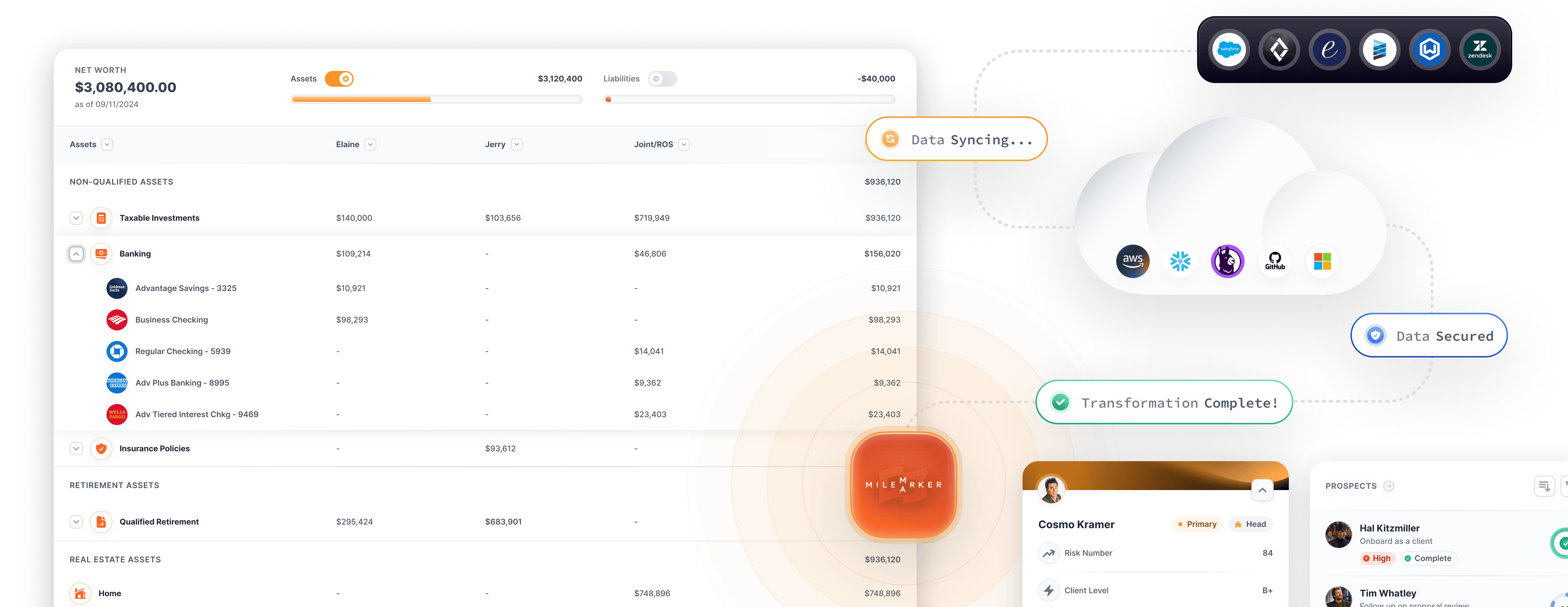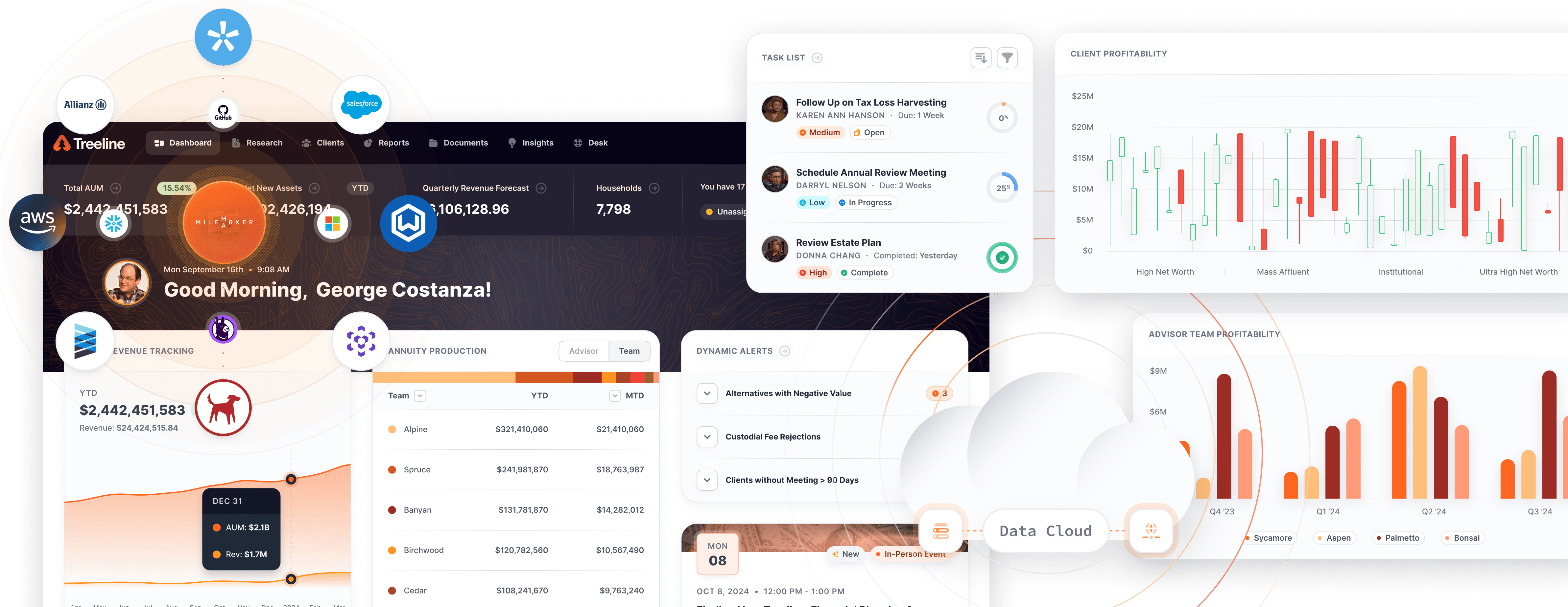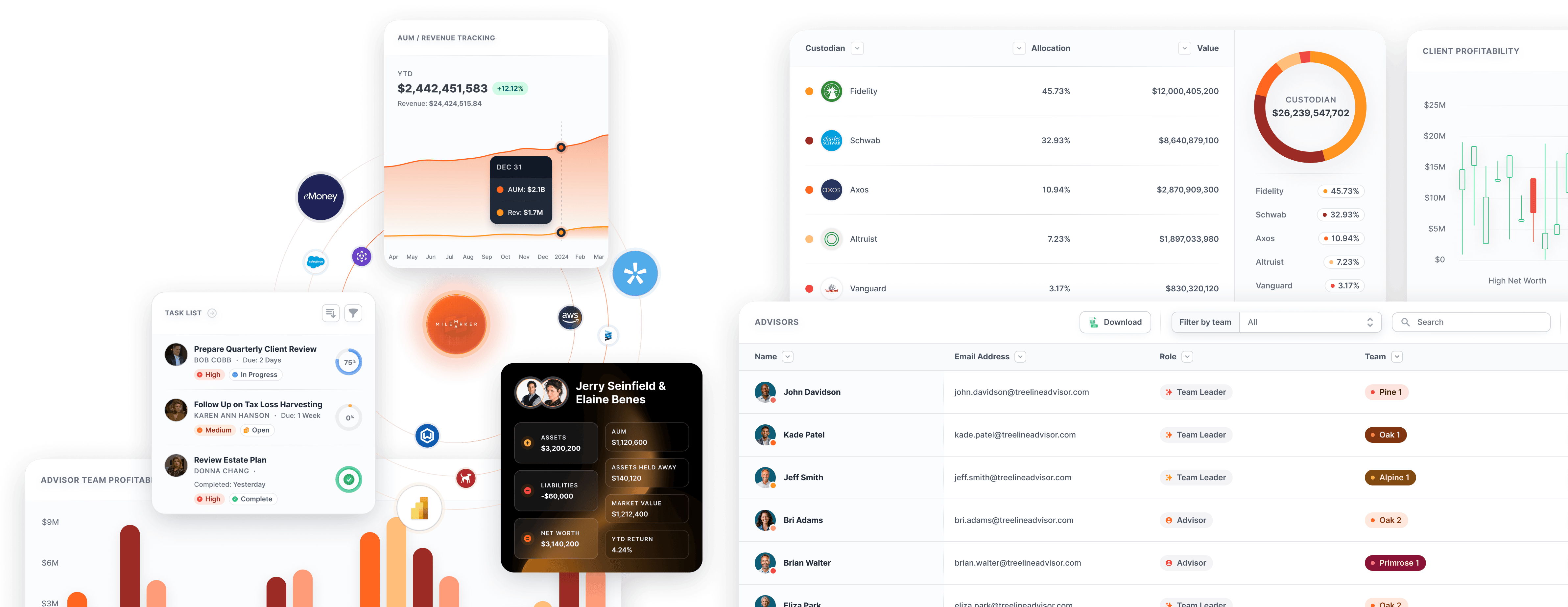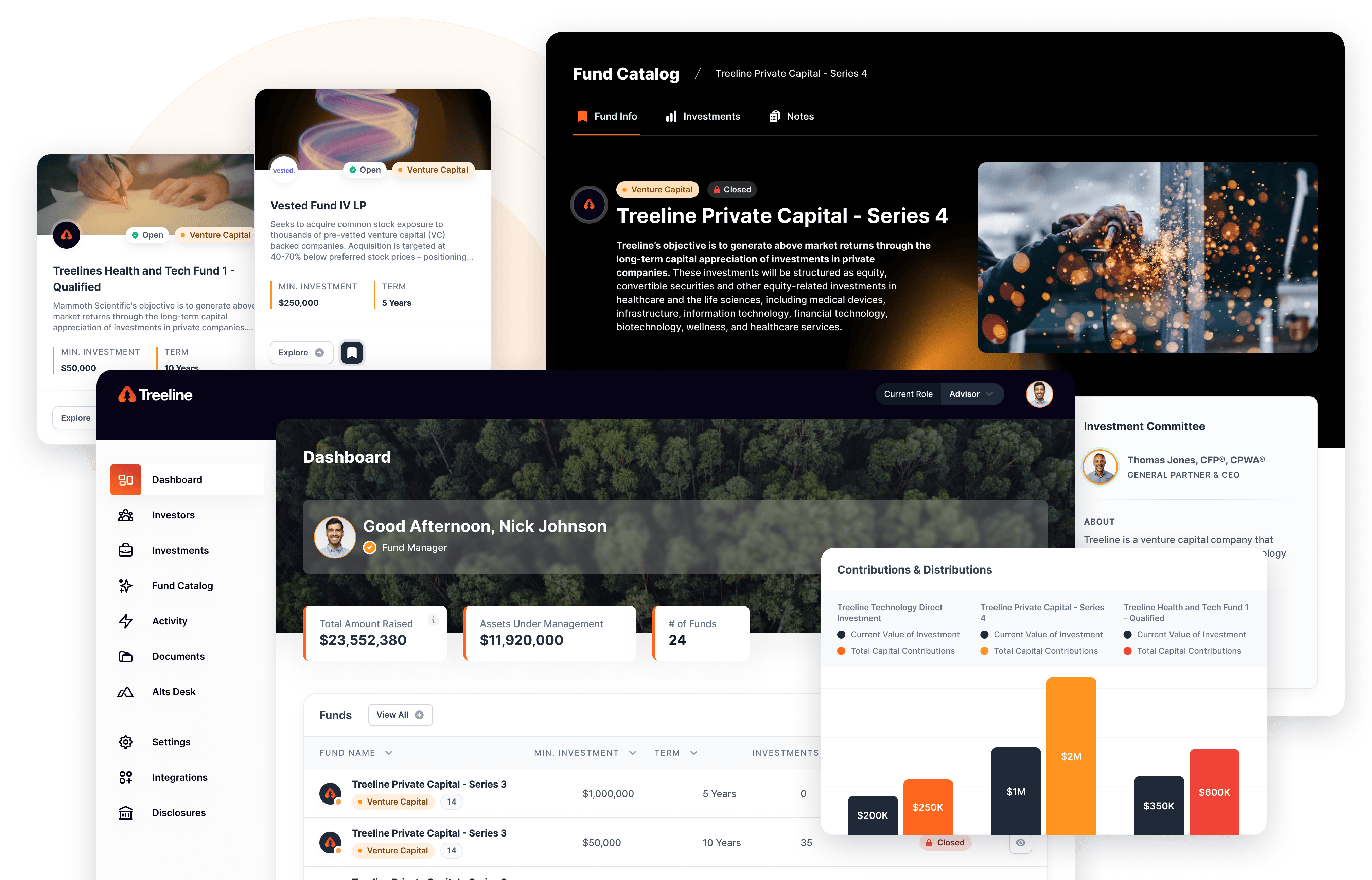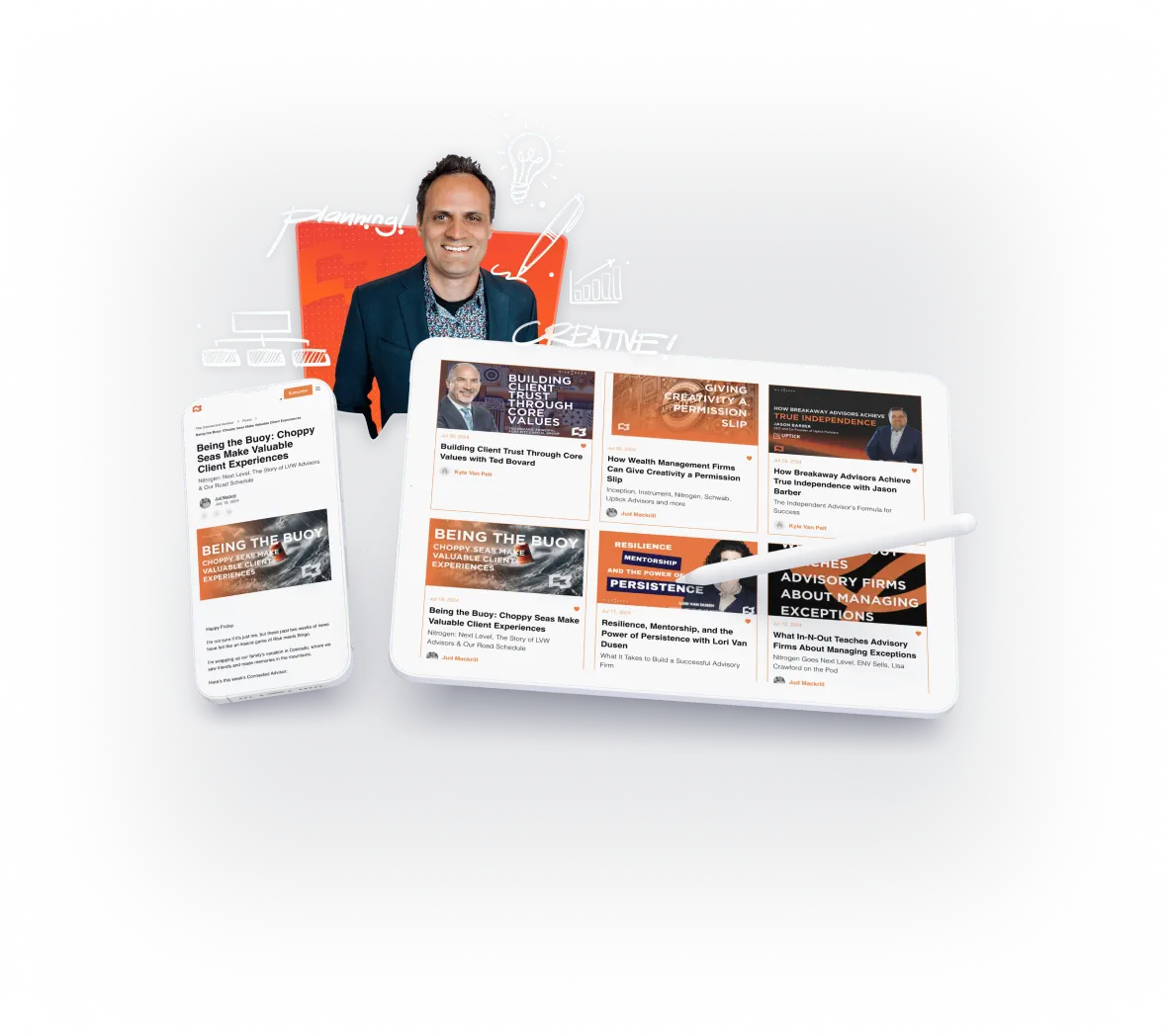Wealth management is in the middle of a technological and generational shift. The industry talks a lot about compliance, growth strategies, and the promise of AI. But beneath those conversations lies a deeper, less obvious problem: fragmented data.
Most RIAs don’t realize that their biggest barrier to growth isn’t market volatility or regulation—it’s their inability to unify client information across systems. When CRM, portfolio management, billing, trading, and custodial data all live in different silos, the consequences ripple through every corner of the business.
Disconnected systems may not look like a serious issue at first, but they create friction that compounds as firms grow. Leaders make decisions with incomplete or inconsistent information. Teams waste hours reconciling reports instead of driving growth. Advisors struggle to deliver a unified client experience because important details sit buried in different tools. Innovation stalls when AI pilots or advanced analytics collapse without clean, connected data. As Kailash Duraiswami, CTO at Milemarker, explains: “You must have your data in one place to really make use of AI.” Firms that ignore this truth end up building tomorrow’s technology on today’s broken foundation.
Centralizing data doesn’t just upgrade IT—it transforms how a firm operates. With one source of truth, leaders move faster, make smarter decisions, and deliver better client experiences. Advisors gain a complete view of a client’s financial life, creating richer conversations and deeper trust. Innovation finally delivers real value. Firms use AI for predictive insights, proactive client guidance, and automation that scales instead of gimmicky workflows that fail. Once the foundation is solid, new platforms integrate smoothly without slowing the business down.
You can see the risks of fragmented data in daily operations. Some firms fall into the double-entry trap, where advisors update the CRM while billing requires a second entry. Operations teams spend hours reconciling numbers, and errors still slip through. Others chase the AI mirage, investing in dashboards that pull from half a dozen disconnected systems. The outputs don’t match, adoption fails, and leaders abandon the project. Many firms that grow through acquisition hit the same wall when incompatible systems prevent them from realizing promised scale benefits. In every case, fragmented data creates the drag.
Firms that want to fix the problem need a deliberate plan. Start by mapping every system where client and operational data lives. Look for overlaps, inconsistencies, and gaps that slow down the business. Build a migration plan toward a centralized data warehouse where every system feeds one trusted dataset. Invest in real ownership of your infrastructure instead of renting access from vendors. When you own your data, you control how it scales, adapts, and integrates into the next wave of technology.
Wealth management is no longer just about markets and portfolios—it depends on the infrastructure that powers relationships at scale. Firms that cling to fragmented systems will stay stuck, unable to innovate or keep pace with client expectations. Firms that unify their data will create a lasting competitive edge. With sharper insights, faster innovation, and stronger client engagement, they will lead the industry into the next decade.
These insights are inspired by the latest episode of the Next Mile podcast featuring Kailash Duraiswami, CTO at Milemarker.👉 Listen to the full episode here and explore additional articles in this series.


